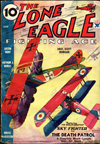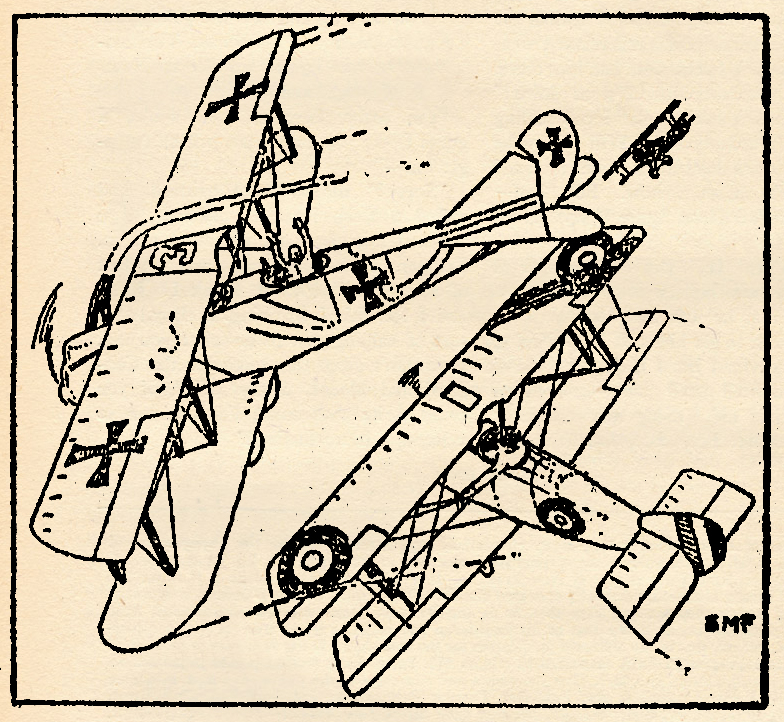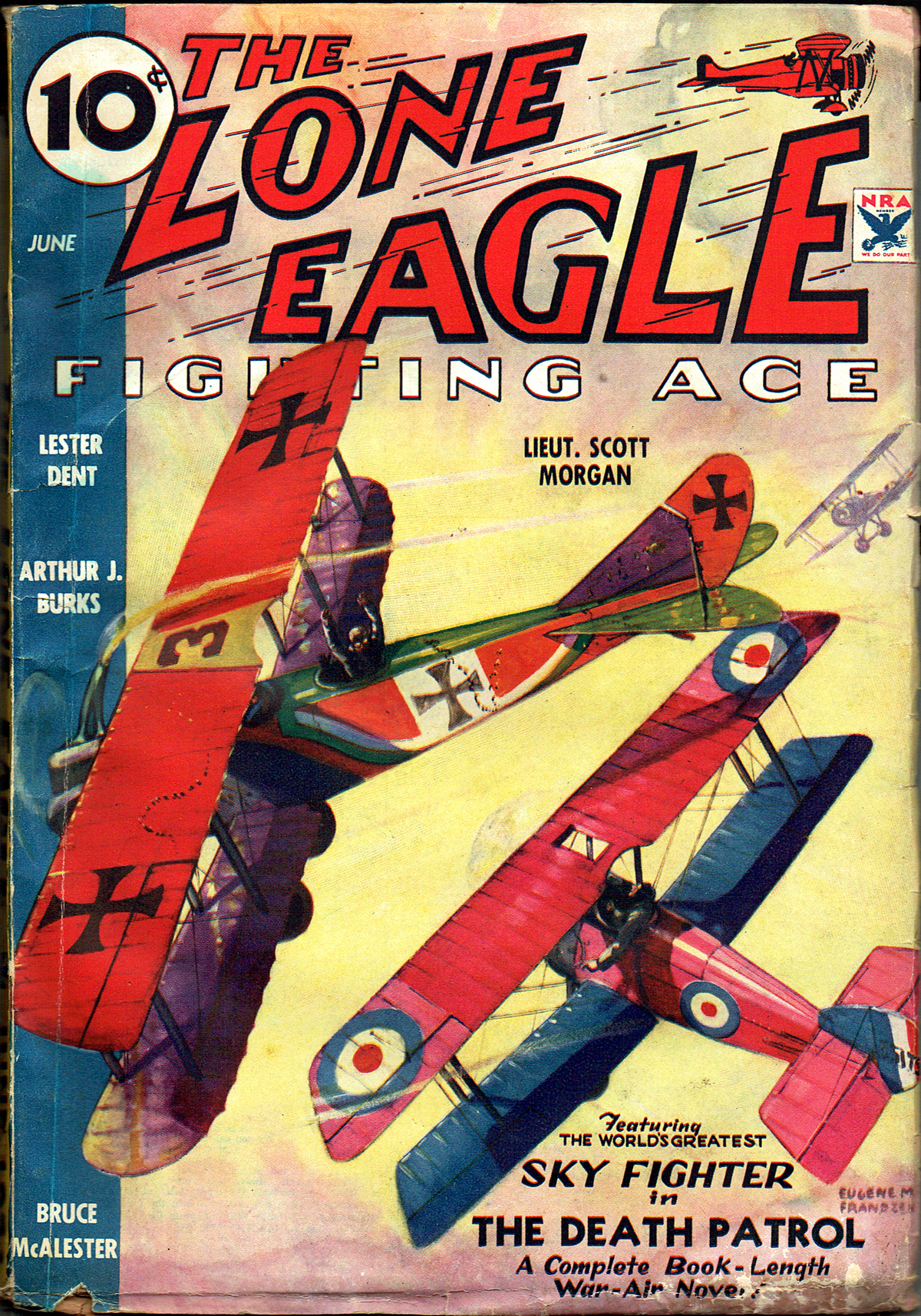“The Lone Eagle, June 1934″ by Eugene M. Frandzen
Eugene M. Frandzen painted the covers of The Lone Eagle from its first issue in September 1933 until the June 1937 issue when Rudolph Belarski took over with the August issue of that year. At the start of the run, Frandzen painted covers of general air action much like his Sky Fighters covers. Here, for the June 1934 cover, Frandzen has a couple Sopwith Camelss in a scrap with a D.F.W. Aviatik type C.V.!
The Story of the Cover
THE scrap depicted on the cover this  month is between two Sopwith Camels and a D.F.W. Aviatik, type C.V. The initials “D.F.W.” stand for quite a mouthful; Deutsche Fregzeug Werke. This company, formed before the war, carried on with contracts from the government through the World War. This model of the D.F.W. is often confused with the L.V.G. It is an easy mistake to make, for they both have many of the same characteristics of construction. It carried a 228 h.p. Benz motor in its nose. It needed all this power for its forty-three foot wing span.
month is between two Sopwith Camels and a D.F.W. Aviatik, type C.V. The initials “D.F.W.” stand for quite a mouthful; Deutsche Fregzeug Werke. This company, formed before the war, carried on with contracts from the government through the World War. This model of the D.F.W. is often confused with the L.V.G. It is an easy mistake to make, for they both have many of the same characteristics of construction. It carried a 228 h.p. Benz motor in its nose. It needed all this power for its forty-three foot wing span.
The Sopwith Camel was manufactured by the Sopwith Aviation Co., Ltd., founded in 1911 by Mr. T.O.M. Sopwith, a well-known aviator. Even before the war the Sopwith planes were famous, one of them, a seaplane, similar to the later Sopwith “Baby” seaplane which did such fine work for the R.N.A.S., having the distinction of winning the Schneider cup races.
It Delivered the Goods
The Camel was designed for extreme maneuverability and high performance. It made its appearance at the end of 1916, and during 1917 it was the outstanding single-seater of the British. Its high rate of climb made it particularly good for defense against Zeppelin raids. In the hands of a competent pilot it could out-maneuver any ship of its class on the front, but put a pilot used to a sluggish-controlled ship at the stick of a Camel and he was lost. The Camel was tricky to fly, but once used to the controls veritable wonders could be performed by a pilot who knew all the tricks of sailing the sky lanes.
This ship delivered the goods from the time it made its appearance right up to the end of the war, and that is something that cannot be said for many ships that were used during the Big scrap.
A Technique of Their Own
Two Anzacs who had done considerable cattle-herding in their beloved Australia had changed their mounts from shaggy ponies to “Camels.” But in the cockpits of their Camels their old habit of cutting out one animal from a herd was not forgotten. They developed a technique of their own of cutting an enemy plane from a flight and harassing it with cross-fire. Anticipating every move of the enemy plane they would gradually work it toward the Allied lines, then over the lines and finally force the unhappy German pilot, whom they had flattered with their undivided attention, to land on their own airdrome.

Now look at the picture on the cover again and you’ll get the drift of the situation. That D.F.W. Aviatik has been picked by our friends in the Camels as a hostage and they are herding him off the range into the corral. And it won’t be long now till all three planes will be making a landing. The back gunner of the D.F.W. is shy his Parabellum gun. He unhooked it from its swivel mount and pitched it overboard at the request of the Camel pilots delivered in sign language and punctuated with a drizzle of Vickers slugs that literally wrote their initials in the side of the Boche ship.
Following the Leader
As the home drome looms ahead the closest Camel pilot sends a short burst across the tail of the German ship. He points down, identifying the drome on which the unhappy Germans must land or be blasted out of the sky. As he flips his Camel under the bulky two-seater the German gunner raises bis hands high above his head, signifying his willingness to play follow the leader.
All three ships nose downward. The Anzacs have brought home the bacon again; just another stray cut out of the sky pastures and jriven private grazing ground for the duration of the emergency.

The Lone Eagle, June 1934 by Eugene M. Frandzen
(The Story of The Cover Page)




